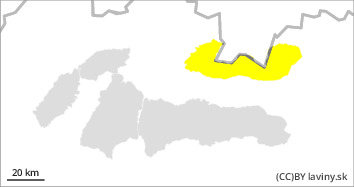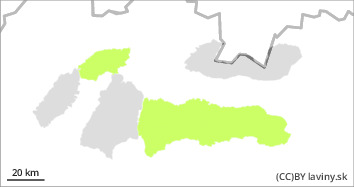
Danger level
 |
|  |  | |||||
|  |
|  |

Watch out for avalanches and avalanches from wet snow, in the north for wind-blown slabs!
Moderate avalanche danger is declared in the High and Western Tatras. At altitudes above 2000m above sea level, slabs and pillows of wind-blown snow still occur in the eastern and northern troughs and moguls. Warning! In some places, wind-blown snow is deposited on a layer of snowflakes = hidden avalanche danger! On very steep slopes, even medium-sized avalanches can be triggered by large additional mechanical loads. On extremely steep slopes, spontaneous avalanches can be expected on saline slopes due to the continuing warming. Avalanche danger needs to be assessed locally in all orientations.
Snowpack
The snow cover is generally well consolidated due to the previous weather pattern. The relatively new snow (10-20 cm) from the last snowfalls (over the weekend and Thursday night to Friday) has not yet had time to firm up and is not firmly bonded to the old base. This layer is unevenly displaced by the wind, mainly on the northern and eastern slopes. Dangerous pillows and slabs are forming there. As a result of further warming, the upper layer of snow melts away, losing its cohesion.
Tendency
Enduring.
Compiled by: Ivan Chlebovec



